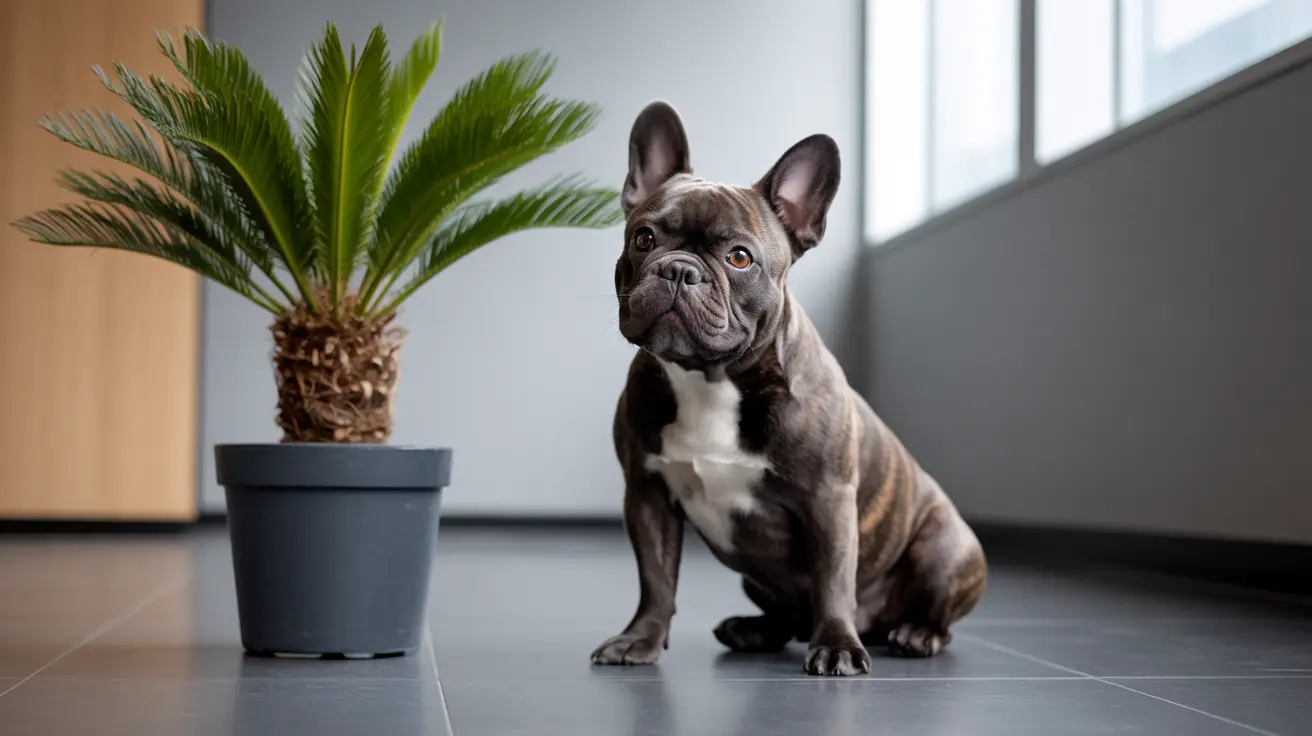Office Hazards for Dogs: A Complete Safety Guide for Pet-Friendly Workplaces
As more companies embrace pet-friendly policies and celebrate events like Take Your Dog to Work Day, the modern workplace is becoming increasingly welcoming to our four-legged companions. While bringing dogs to the office can decrease stress, improve social interaction, boost morale, and increase productivity, it's crucial to understand that offices are typically not designed with animals in mind, creating various safety risks that responsible pet owners must address.
The reality is that what seems like a harmless office environment to humans can present numerous hidden dangers to curious dogs. From toxic foods left on desks to poisonous plants in the lobby, these everyday workplace items can pose serious health risks to pets. Understanding these office hazards for dogs and implementing proper safety measures is essential for creating a safe, positive environment where both employees and their canine companions can thrive.
This comprehensive guide will help office workers and employers identify potential dangers, implement effective safety measures, and ensure that bringing dogs to work remains a beneficial experience for everyone involved.
Common Physical Hazards in Office Environments
Office spaces contain numerous physical hazards that can pose immediate dangers to dogs. Exposed electrical wires and cables present serious risks of electrocution or burns if dogs chew on them, making proper cable management essential in any pet-friendly workplace. These hazards are particularly concerning because dogs, especially puppies or naturally curious breeds, may be drawn to investigate these items.
Office equipment such as shredders and printers can also create safety concerns. Moving parts, sharp edges, and electrical components in these machines can cause injuries if dogs get too close or attempt to investigate. Additionally, the office environment presents slip, trip, and fall hazards not just for humans but for dogs as well, especially in areas with smooth flooring or cluttered walkways.
Pet owners must ensure their dogs remain supervised and stay near their owner's workspace rather than having free roam of the office. This controlled approach helps minimize exposure to physical hazards while allowing dogs to enjoy the benefits of being in the workplace.
Toxic Foods and Substances in the Workplace
One of the most significant office hazards for dogs involves the numerous toxic foods and substances commonly found in workplace environments. Chocolate, which is frequently present in office break rooms and on employees' desks, contains compounds that are highly toxic to dogs and can cause serious health complications or even death if consumed in sufficient quantities.
Other common workplace foods that pose serious risks include grapes, onions, garlic, avocados, macadamia nuts, and any products containing xylitol (a common artificial sweetener). Coffee and caffeine-containing beverages are also dangerous for dogs and should be kept well out of reach. The office kitchen and break room areas are particularly high-risk zones, which is why Pet Sitters International recommends designating these areas as completely off-limits to dogs.
Human medications present another serious hazard, as both over-the-counter and prescription drugs can be extremely dangerous to dogs. These items are often left on desks or in easily accessible areas, making proper storage and awareness crucial for preventing accidental ingestion.
Dangerous Plants and Office Décor
Many offices feature decorative plants that, while beautiful and beneficial for human employees, can be highly toxic to dogs. Sago palms, azaleas, lilies, and oleanders are among the most dangerous plants commonly found in office environments. Even seemingly harmless plants can cause gastrointestinal upset or more serious health issues if consumed by curious dogs.
Pet owners should familiarize themselves with the plants present in their workplace and advocate for pet-friendly alternatives when possible. If toxic plants cannot be removed, they must be placed completely out of reach of dogs, ideally in areas where pets are not allowed to roam freely.
The key to managing plant-related risks is prevention through proper identification and positioning of potentially harmful vegetation within the office space.
Chemical Hazards and Cleaning Products
Office environments contain numerous chemical hazards that can pose serious risks to dogs. Cleaning products, which are essential for maintaining workplace hygiene, often contain ingredients that are toxic if ingested by pets. These products may be stored in easily accessible cabinets or left out during cleaning routines, creating opportunities for accidental exposure.
Insecticides, rodenticides, and pesticides used for office pest control represent particularly serious hazards. These substances are often designed to be attractive to pests, which can also make them appealing to dogs. Even small amounts of these chemicals can cause severe poisoning or death in pets.
Other chemical hazards include antifreeze (which may be present in office building maintenance areas), batteries, and various industrial or office-specific chemicals. Pet owners must ensure these items are properly secured and inaccessible to their dogs at all times.
Creating a Comprehensive Office Safety Checklist
Before bringing dogs to work, pet owners should conduct a thorough safety sweep of their workspace and surrounding areas. This process involves identifying and securing all potential hazards, from toxic foods to dangerous equipment. The safety checklist should include ensuring all electrical cables are properly managed and out of reach, securing or removing toxic plants, and confirming that all potentially dangerous foods and substances are stored safely.
Pet owners should also prepare essential supplies including a dog bed, water and food bowls, appropriate treats, toys, leash, collar or harness, waste bags, and confinement tools such as a crate or gate. These items help create a safe, designated space for the dog while providing necessary comfort and security.
The preparation process should also include gradually introducing dogs to the office environment, starting with short visits and progressively increasing the time spent in the workplace. This approach helps dogs acclimate to the new environment while allowing owners to identify any specific hazards or behavioral concerns.
Training and Behavior Management for Office Safety
Proper training and behavior management are essential components of office safety for dogs. Dogs brought to the workplace must be well-trained, socialized, and up to date on vaccinations. They should respond reliably to basic commands and demonstrate calm behavior in various situations.
Owners must remain vigilant for signs of stress or aggression in their dogs and be prepared to remove them from the situation if necessary. Dogs should be leashed during introductions and interactions with new people, and owners should reward calm behavior consistently to reinforce appropriate workplace conduct.
Supervision is crucial – dogs should not be left unattended and should remain close to their owner's workspace at all times. This controlled approach helps prevent access to hazardous areas while ensuring that any behavioral issues can be addressed immediately.
Recognizing and Responding to Emergencies
Despite best prevention efforts, accidents can occur, making it essential for pet owners to recognize symptoms of poisoning or injury from office hazards. Signs of poisoning may include vomiting, diarrhea, excessive drooling, difficulty breathing, seizures, or unusual behavior changes. Any suspected poisoning requires immediate veterinary consultation or contact with poison control services.
Pet owners should have emergency contacts readily available, including their veterinarian's information and local emergency animal hospitals. Having cleaning supplies on hand for accidents and a basic first aid kit can also be valuable for managing minor issues quickly and effectively.
Quick response to potential emergencies can make the difference between a minor incident and a serious health crisis, emphasizing the importance of preparation and awareness.
Legal and Policy Considerations
Legal risks exist when employees or customers are injured by workplace dogs, with dog owners generally liable for damages caused by their pets. Employers allowing dogs should create comprehensive pet policies requiring proof of vaccinations, training documentation, clear behavior management expectations, and formal liability acceptance from pet owners.
Workplace policies should include consent processes for coworkers, sign-up systems for bringing pets, and zero-tolerance policies for aggression or safety violations. Employees should have clear pathways for reporting concerns and well-defined enforcement mechanisms for safety rule violations.
Some companies, like Embrace Pet Insurance, have found success with policies requiring dogs to stay in gated departments while working, contributing to both safety and positive workplace dynamics.
Frequently Asked Questions
What are the most dangerous office hazards for dogs?
The most dangerous office hazards for dogs include toxic foods like chocolate, grapes, onions, and garlic; human medications; poisonous plants such as sago palms and azaleas; cleaning products and chemical substances; exposed electrical wires; and pest control products like insecticides and rodenticides.
Which office areas should be completely off-limits to dogs?
Pet Sitters International recommends designating bathrooms, break rooms, and kitchens as completely off-limits to dogs. These areas typically contain the highest concentration of toxic foods, cleaning products, and other hazardous substances.
How can I prepare my dog for their first day at the office?
Start by ensuring your dog is well-trained, socialized, and up to date on vaccinations. Begin with short office visits and gradually increase the time spent in the workplace. Pack essential supplies including a dog bed, bowls, treats, toys, leash, and confinement tools like a crate or gate.
What should I do if I suspect my dog has been poisoned at work?
If you suspect poisoning, contact your veterinarian immediately or call a poison control service. Look for symptoms like vomiting, diarrhea, excessive drooling, difficulty breathing, seizures, or unusual behavior changes. Quick response is crucial for the best outcome.
Are there pet-friendly alternatives to toxic office plants?
Yes, there are many pet-safe plants that can provide the same aesthetic benefits as toxic varieties. Research pet-friendly alternatives and advocate for their use in your workplace, or ensure toxic plants are placed completely out of your dog's reach.
What legal responsibilities do I have when bringing my dog to work?
Dog owners are generally liable for damages caused by their pets in the workplace. You should ensure your dog is properly trained and vaccinated, obtain necessary permissions from your employer and coworkers, and be prepared to accept responsibility for any incidents involving your pet.
How often should my dog have bathroom breaks during a workday?
Dogs should receive sufficient toilet breaks throughout the workday, typically every 4-6 hours for adult dogs, though this may vary based on age, size, and individual needs. Puppies and senior dogs may require more frequent breaks.
Conclusion
Creating a safe office environment for dogs requires careful planning, ongoing vigilance, and a thorough understanding of the various hazards present in typical workplace settings. While the benefits of dog-friendly offices – including decreased stress, improved morale, and enhanced social interaction – are well-documented, these advantages can only be realized when proper safety measures are implemented and maintained.
By identifying and mitigating office hazards for dogs through comprehensive preparation, appropriate training, and clear workplace policies, employers and pet owners can create positive experiences that benefit both human employees and their canine companions. The key lies in balancing the joy and benefits of having dogs in the workplace with the fundamental responsibility of ensuring their safety and the safety of all workplace occupants.






